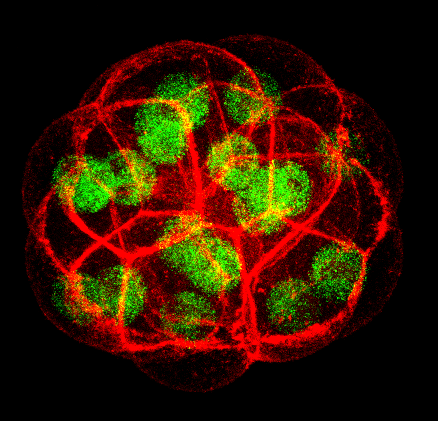Project description
The project aims to address the dynamics and functional role of 3D genome interactions of regulatory regions, in cell fate decision in the early mouse embryo. In mammals, the first cell decision gives rise to the segregation of the pluripotent compartment – the inner cell mass – and the trophectoderm and occurs prior to embryo implantation. The inner cell mass are pluripotent and will form the embryo proper, while the trophectoderm will form the placenta. Thus, understanding the regulation of such cell fate allocation will provide key insights on the origin of pluripotency and embryonic stem cells (ESCs), which derive from the inner cell mass. The project will use a combination of embryological, 3D imaging, and genomics approaches including single cell dissection and analyses, 3D-FISH, ATACseq and RNAseq both in embryos (Torres-Padilla lab in Munich) as well as in ESCs through a collaboration with the Chambers lab. Thus, overall, this project will establish the functional role of 3D interactions and their regulatory factors in the establishment (Torres-Padilla lab) and maintenance of pluripotency (Chambers lab).

Relevant literature
-
Jansz N. & Torres-Padilla ME. (2019). Genome activation and architecture in the early mammalian embryo. Curr Opin Genet Dev. 55:52-58
-
Borsos M., Perricone S. M., Schauer T, Pontabry J, de Luca K. L. , de Vries S. S., Ruiz-Morales E. R., Torres- Padilla ME* & Kind, J*. (2019). Genome-lamina interactions are established de novo in the early mouse embryo. Nature. 569(7758):729-733.
-
Torres-Padilla ME. & Chambers I. (2014). Transcription factor heterogeneity in pluripotent stem cells: a stochastic advantage. Development, 141(11):2173-81
-
Burton A. & Torres-Padilla ME. (2014). Chromatin dynamics in the regulation of cell fate allocation during early mammalian embryogenesis. Nature Rev Mol Cell Biol. 15(11)723-34
